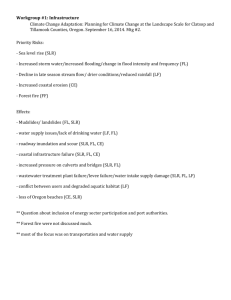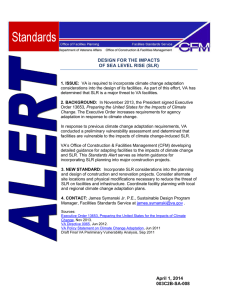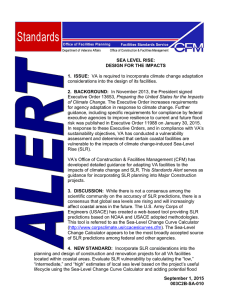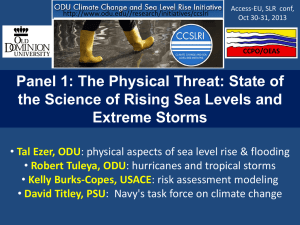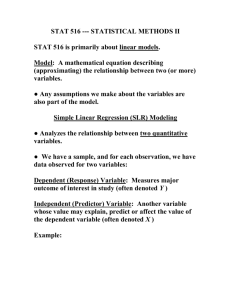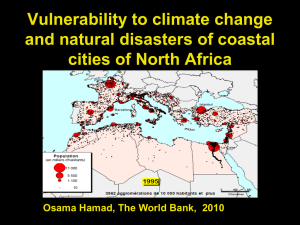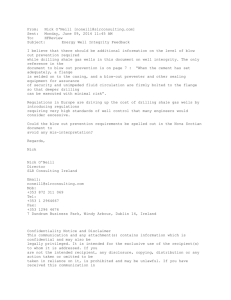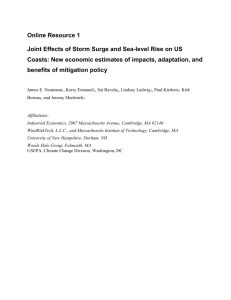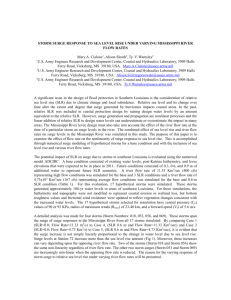CHR Workshop – Participant Input - Midcoast Council of Governments
advertisement
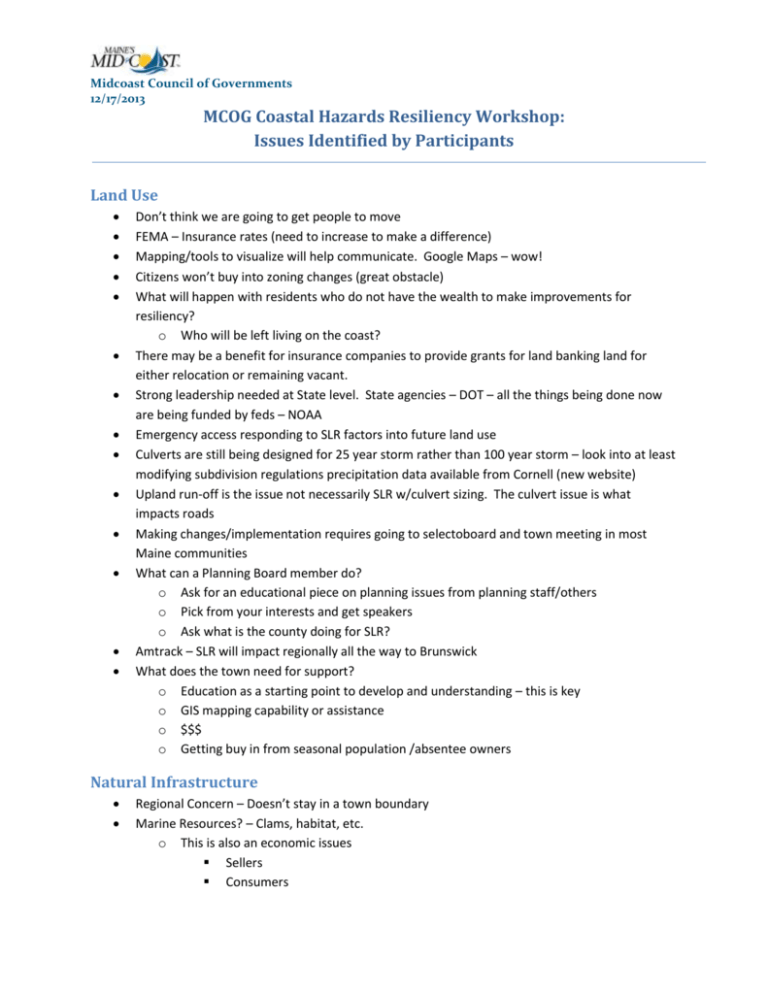
Midcoast Council of Governments 12/17/2013 MCOG Coastal Hazards Resiliency Workshop: Issues Identified by Participants Land Use Don’t think we are going to get people to move FEMA – Insurance rates (need to increase to make a difference) Mapping/tools to visualize will help communicate. Google Maps – wow! Citizens won’t buy into zoning changes (great obstacle) What will happen with residents who do not have the wealth to make improvements for resiliency? o Who will be left living on the coast? There may be a benefit for insurance companies to provide grants for land banking land for either relocation or remaining vacant. Strong leadership needed at State level. State agencies – DOT – all the things being done now are being funded by feds – NOAA Emergency access responding to SLR factors into future land use Culverts are still being designed for 25 year storm rather than 100 year storm – look into at least modifying subdivision regulations precipitation data available from Cornell (new website) Upland run-off is the issue not necessarily SLR w/culvert sizing. The culvert issue is what impacts roads Making changes/implementation requires going to selectoboard and town meeting in most Maine communities What can a Planning Board member do? o Ask for an educational piece on planning issues from planning staff/others o Pick from your interests and get speakers o Ask what is the county doing for SLR? Amtrack – SLR will impact regionally all the way to Brunswick What does the town need for support? o Education as a starting point to develop and understanding – this is key o GIS mapping capability or assistance o $$$ o Getting buy in from seasonal population /absentee owners Natural Infrastructure Regional Concern – Doesn’t stay in a town boundary Marine Resources? – Clams, habitat, etc. o This is also an economic issues Sellers Consumers Midcoast Council of Governments 12/17/2013 Eco-Tourism Open Space Plans – Do they account for natural infrastructure? Wildlife Corridors – How are these impacted as a result of sea level rise? Regional “data commons” – Available through Google Earth Capacity of natural infrastructure to accommodate change? Balancing development & need to preserve and protect natural infrastructure Old canals as “spillways” for natural floods? Relationship between natural & built infrastructure – need to be aware of the impacts one has on the other Emergency Management Hazard Mitigation Planning Involve/Educate local EMA’s Inform residents of specific risks & help them prepare Preparedness at municipal level Emergency notification Emergency access responding to SLR factors into future land use Economic Development Need to consider the impacts on downtowns and what this means for businesses and downtown revitalization efforts (i.e. Bath) Impact on certain fisheries (i.e. clams) and tourism – has this been looked at thoroughly? Built Infrastructure Identify and plan for all municipal infrastructure that could be impacted by SLR – what planning horizon should be used in looking at lifecycle of infrastructure? Culverts are still being designed for 25 year storm rather than 100 year storm – look into at least modifying subdivision regulations precipitation data available from Cornell (new website) Upland run-off is the issue not necessarily SLR w/culvert sizing. The culvert issue is what impacts roads
